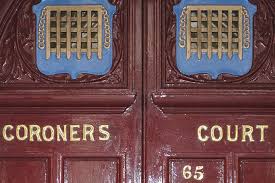Chief executive Jim Harra claims department will target fraudsters
Credit: Got Credit/CC BY 2.0
Up to £3.5bn from the government’s furlough scheme could have been paid out in error or due to fraudulent claims, HM Revenue and Customs has said.
HMRC permanent secretary Jim Harra told MPs on Monday that 27,000 “high-risk” cases were being pursued amid fears that 5-10% of applications could have been claimed fraudulently or in error.
Official figures show as much as £35.4bn has been paid out through the government’s job-retention scheme since it was established in April. The scheme paid 80% of furloughed workers’ wages in the first months of lockdown with around 1.2 million employers making the use of the online system by August.
As many as 2.7 million people also used a scheme to support the self-employed, during the pandemic, claiming a further £7.8bn in funding from the Treasury.
Speaking to the Public Accounts Committee on Monday, Harra said the tax authority would not pursue employers who had made claims in error and would instead focus on tackling fraudulent activities.
“We have made an assumption for the purposes of our planning that the error and fraud rate in this scheme could be between 5% and 10%,” Harra said. “That will range from deliberate fraud through to error. What we have said in our risk assessment is we are not going to set out to find employers who have made legitimate mistakes in compiling their claims, because this is obviously something new that everybody had to get to grips with in a very difficult time.”
Related content
- HMRC Making Tax Digital to continue rollout in 2022
- Coronavirus has been a boon for cybercriminals
- Digital pros among 100 furloughed citizens pitching in at government departments
He added: “Although we will expect employers to check their claims and repay any excess amount… what we will be focusing on is tackling abuse and fraud.”
The HMRC chief executive also revealed that 8,000 calls had been made to HMRC’s fraud telephone hotline in regards to the scheme.
And he encouraged workers who believed their employers were making fraudulent claims to report them to his department.
He added: “While we can’t get involved in any relationship between the employee and employer, we can certainly reclaim any grant that the employer is not entitled to, which includes grants they have not passed on in wages to their employees.”
The job retention scheme is set to wind down from next month, with chancellor Rishi Sunak repeatedly dismissing calls from opposition MPs to extend the support further.
The platform for delivering the furlough programme was one of the most significant of a number major new digital services that HMRC was required to build at speed in response to the coronavirus crisis.
In a recent interview with PublicTechnology sister publication Civil Service World, the department’s chief executive Jim Harra paid tribute to technologists and other staff he claimed had “risen to the challenge” of responding to the pandemic.
“I’m very proud of what everybody achieved, both in developing the technology from our in-house team, and our suppliers, but also all the operational colleagues who got behind that to man the phone lines and the web chat, and to write guidance and train colleagues,” he said.
The furlough scheme, including an online application process, was up and running on 20 April, exactly one month after Sunak had announced its creation – and 10 days sooner than expected. It was followed by the self-employment scheme service and a tool for expanded sick pay entitlement, which went live on 13 May and 26 May, respectively.
“One of the reasons why we’ve been able to implement them so fast is that implementation was built into the design of the policy – and for these schemes to achieve their objectives, they had to be delivered fast, otherwise they wouldn’t have worked,” Harra said.



